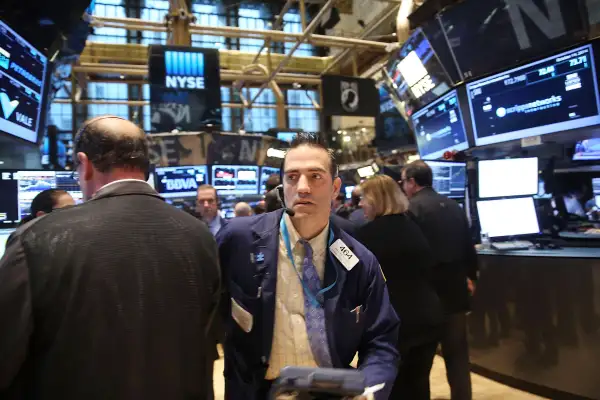Stocks Plunge Wednesday on Global Economic Fears
Money is not a client of any investment adviser featured on this page. The information provided on this page is for educational purposes only and is not intended as investment advice. Money does not offer advisory services.

Updated: 4:30 pm
Volatility is back with a vengeance on Wall Street.
The Dow Jones industrial average plunged around 450 points on Wednesday afternoon before recovering to close at 175 points down, marking the sixth day in October that the stock market has suffered triple-digit losses. The Dow, which had been trading as high as 17,145 at the end of September, sank to below 15,900 before ending the day at 16,141.
This capped off the worst three-day sell off for the broad market since 2011.
Small-company stocks — considered the market's canary in the coal mine, since they're more easily rattled by changes in the economy due to their size — sank around 1% on Wednesday and are in an official correction, defined as a 10% drop in value over an extended period. Micro-cap stocks, the tiniest sub-set of small stocks, also fell and they're only a few percentage points off from an official bear market, or a 20% decline.
Why?
Wall Street is having flashbacks to the bad old days in the aftermath of the global financial panic, when there were real concerns that the global economy might slip back into a deflationary and recessionary spiral.
Right now, the big worry is that Europe and Japan will soon suffer their third recessions in the past six years. Policymakers in both countries are scrambling to find ways to jumpstart growth, yet their central banks are running out of ammunition.
Meanwhile China, once viewed as the engine driving global growth, has been slowing noticeably in recent quarters and can't find a way to reaccelerate, as it works through its own housing and financial crisis.
"While domestic growth is robust, slowing economies abroad have the potential to upset the recovery," notes Jack Ablin, chief investment officer for BMO Private Bank.
Those global growth concerns are now being reflected in two troubling trends.
First, there's the plunge in crude oil prices. While a barrel of crude oil traded above $100 a barrel as recently as this summer, prices fell to around $81 a barrel on Wednesday morning. Falling oil prices are often viewed as a good thing — since lower energy costs free up households and businesses to spend on other things. Yet the fact is, people aren't necessarily spending that money on other things.
Michael Gapen, chief U.S. economist for Barclays Capital, noted that U.S. retail sales fell 0.3% in September. "The main downside surprise in this report," he said, came in core retail sales — which strips out volatile food an energy prices — fell 0.2%. He said that was "against our expectation for a four-tenths rise."
Moreover, the price of oil sometimes doesn't cause good things so much as it reflects bad things already in the economy.
Right now, investors may be asking: "Is this the moment of truth when lower oil is signaling lower demand?" says Neal Dihora, an analyst with Morningstar.
Similarly, fears over the global economy tends to drive investors into slow-growing but safe assets, like Treasury bonds. And this morning, the yield on the 10-year Treasury fell below the 2% threshold for the first time since June 2013, a worrisome trend as Money's Pat Regnier points out.
Even more troubling is the possibility that the market is telling us that the financial crisis may not be squarely in the rear view mirror.
BMO's Ablin noted:
"Decades of debt accumulation touched off the 2008 financial crisis and critics argue that the solution, quantitative easing programs, simply shifted borrowing from the private sector to the public sector. The Fed’s primary lever since the Greenspan years, boosting asset prices and enticing borrowing by lowering interest rates, is no longer working now that short-term rates are effectively zero. Scarred by the financial meltdown and an underwater mortgage, households have had a change of heart and are now more interested in reducing debt."
And as investors are keenly aware, reducing debt doesn't help stimulate economic activity.
